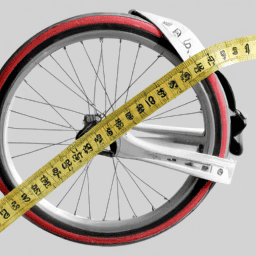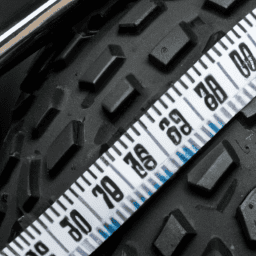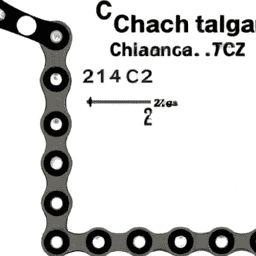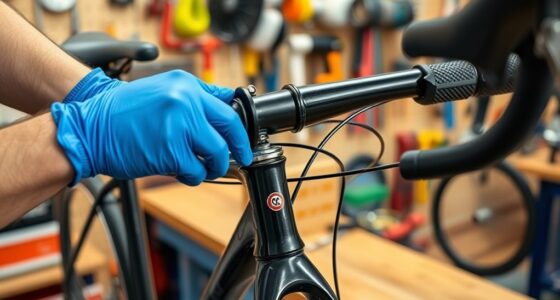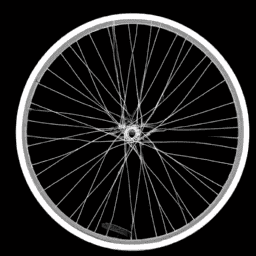Greetings, fellow bicycle aficionados! Are you pondering over the method to determine the size of your bike wheel? If so, you’re in the perfect spot! Being an experienced rider, I understand the critical nature of precise dimensions for your bicycle’s parts, particularly the wheels.
Whether you’re upgrading your bike, replacing a tire, or simply curious about your wheel size, knowing how to measure it is a crucial skill to have.
Before we dive into the nitty-gritty of measuring your bike wheel size, let’s first understand why it’s important. Having the correct wheel size not only ensures proper bike fit and performance but also affects the type of tires, tubes, and other components you can use. Additionally, knowing your wheel size is essential when shopping for replacement parts or upgrading your bike’s wheels.
So, without further ado, let’s get started on how to measure your bicycle wheel size accurately and confidently.
Key Takeaways
- Accurate measurement of bike wheel size is important for proper bike fit and performance.
- Measuring bike wheel size requires a tape measure and a wrench, and also takes into account the width and type of tire.
- Double-checking measurements is crucial when replacing parts on your bike to avoid ill-fitting replacements.
- Different types of bike wheels include road wheels, mountain bike wheels, and BMX wheels, each with their own unique size specifications.
Determine the Type of Bike Wheel You Have
If you’re unsure about the type of bike wheel you have, it’s important to take a closer look and identify any distinguishing features. One of the first things you should do is to identify the bike tire size. You can usually find this information printed on the side of the tire itself.
The tire size is typically written as a series of numbers separated by an x symbol. For example, a common bike tire size is 700 x 23c. The first number (700) refers to the diameter of the tire in millimeters, while the second number (23) refers to the width of the tire in millimeters.
Differentiating between wheel types can be a bit trickier. There are several different types of bike wheels, including road wheels, mountain bike wheels, and BMX wheels. Road wheels are typically lighter and narrower than mountain bike wheels, which are designed to handle rough terrain. BMX wheels are even smaller and sturdier than mountain bike wheels and are designed for freestyle riding and tricks.
Once you have identified the type of wheel you have, it’s time to gather the necessary tools to measure the wheel size accurately.
Gather the Necessary Tools
First off, you’ll need to grab a trusty tape measure and a good ol’ fashioned wrench. These tools will help you accurately measure your bike’s wheel size, which is crucial for proper maintenance and replacement. The importance of wheel size cannot be stressed enough, as it affects the performance and safety of your ride.
Contrary to common misconceptions, the size of a bike’s wheels is not determined by their diameter alone. Other factors such as the width and type of tire also play a role. To gather an accurate measurement, you’ll need to take into account all of these factors.
Here are some other things to keep in mind as you start measuring your bike’s wheel size:
- Make sure your bike is supported and level before taking measurements
- Remove any accessories such as fenders or reflectors that may interfere with the tape measure
- Check for any damage or deformities in the wheel that may affect the measurement
- Remember that wheel size can vary between different models and brands of bikes
With these tools and tips in mind, you can begin to measure the diameter of your bike’s wheels. This will give you a good starting point for determining the full size and type of wheel you have.
Measure the Diameter
To measure the diameter of bicycle wheels, there are several key points to keep in mind. First, for 26-inch wheels, measure from the center of the axle to the outer edge of the tire.
Second, for 700c wheels, the measurement is taken from the center of the axle to the top of the tire.
Lastly, accuracy is essential for proper fit and performance, so be sure to use a reliable measuring tool and take multiple measurements to ensure accuracy.
Measuring 26-Inch Wheels
Measuring 26-inch wheels requires determining the diameter of the wheel from the outer edge of the tire to the outer edge of the opposite side of the tire. However, there are common misconceptions about the measurement process that should be addressed.
Here are the advantages and disadvantages of measuring 26-inch wheels:
-
Advantage: 26-inch wheels are widely used in mountain bikes, so it’s a common size to measure.
-
Advantage: Measuring the diameter of 26-inch wheels can be done with a tape measure or ruler, making it an easy process.
-
Disadvantage: The tire width can affect the overall diameter of the wheel, so it’s important to measure from the outer edge of the tire to the opposite outer edge to get an accurate measurement.
-
Disadvantage: Sometimes, the measurement may not be exact due to the tire’s shape or wear.
Moving on to measuring 700c wheels, the process is similar but with different specifications.
Measuring 700c Wheels
Getting the right fit for your bike is like finding the perfect puzzle piece, and knowing the diameter of your 700c wheels is crucial to completing that puzzle. 700c wheel compatibility is important to ensure that your bike can handle the size and weight of the wheel. It is also essential to consider the advantages of different wheel sizes, such as speed, stability, and comfort.
To help you understand the differences between wheel sizes, I have created a table that compares the 700c wheels to other popular wheel sizes. The table shows that 700c wheels are larger than 26-inch wheels but smaller than 29-inch wheels. They are also thinner than 26-inch wheels but wider than 29-inch wheels. The advantage of a 700c wheel is that it can provide a good balance between speed and stability.
Measuring the width of your bike wheel is the next step in getting the right fit for your bike. It is important to know the width of your wheel to ensure that you choose the right tire for your bike.
Measure the Width
The width of a bicycle wheel can be determined by using a ruler or caliper to measure the distance between the inner edges of the rim. It’s important to ensure that the measurement is taken at the widest point of the wheel.
When measuring the width of a 700c wheel, it’s important to take into account the rim’s inner width, which can affect the width of the tire. Calculating circumference and using online resources can help determine the proper width measurement.
It’s crucial to double-check your measurements to ensure accuracy when measuring the width of a bicycle wheel. This is especially important if you’re replacing a tire or wheel, as an incorrect measurement can result in an ill-fitting replacement.
Double-Check Your Measurements
Make sure to double-check your measurements to avoid any mistakes when replacing parts on your bike. Even if you’ve followed the previous steps carefully, common mistakes can still happen. Here are some alternative methods to double-check your measurements:
-
Use a different measuring tool – If you used a tape measure, try using a ruler or caliper to verify your measurements. Different tools may give slightly different results, so it’s important to use a variety of tools to ensure accuracy.
-
Measure from different angles – If you measured the wheel from the side, try measuring from the top or bottom as well. This will help you get a better sense of the true dimensions of the wheel and avoid any errors caused by perspective.
-
Compare to manufacturer specifications – Look up the specifications for your bike’s make and model online to confirm that your measurements are consistent with the manufacturer’s recommendations. This will help you avoid any potential problems caused by using the wrong size parts.
Frequently Asked Questions
What is the difference between a clincher and a tubular bicycle wheel?
When it comes to choosing between a clincher and tubular bicycle wheel, "the proof is in the pudding."The advantages of a clincher include easier maintenance and repair, while a tubular offers a smoother ride for racing. Consider your riding style before deciding.
Can I measure the wheel size without removing it from the bike?
I have found that measuring accuracy is compromised when the wheel remains on the bike. Alternative methods include using a measuring tape or caliper to determine the wheel size, ensuring greater precision.
How do I measure the spoke count of my bicycle wheel?
Measuring spoke count is a crucial aspect of ensuring my wheel’s optimal performance. Accuracy tips involve identifying the valve hole, counting the spokes in a section, and multiplying by the total number of sections. Neglecting this vital step can result in wheel instability and misalignment.
What is the maximum tire size that can be used with a specific wheel size?
I can determine the max tire clearance and tire width compatibility of my wheel size by checking the manufacturer’s specifications or measuring the distance between the fork or frame. It’s important to ensure proper clearance to prevent tire rub and ensure safe riding.
Are there any special considerations for measuring the wheel size of a folding bike?
Measuring the wheel size of a foldable bike requires special considerations for compatibility. Techniques may vary depending on the design, but precise measurements can be obtained using a tape measure or caliper. A folding bike’s wheel size can affect its overall performance.
Conclusion
So, there you have it! A step-by-step guide on how to measure the size of your bicycle wheel. It might seem like a daunting task, but with the right tools and a bit of patience, you can easily determine the size of your bike’s wheels.
But wait, before you start pedaling away, there’s one last thing you need to know. Wheel size is just one of the many factors that can affect your bike’s performance. The type of terrain, tire pressure, and even the weather can all play a role in how your bike handles on the road or trail.
So, while knowing your wheel size is important, it’s just one piece of the puzzle. Keep exploring and experimenting with your bike to find out what works best for you.
Happy cycling!
